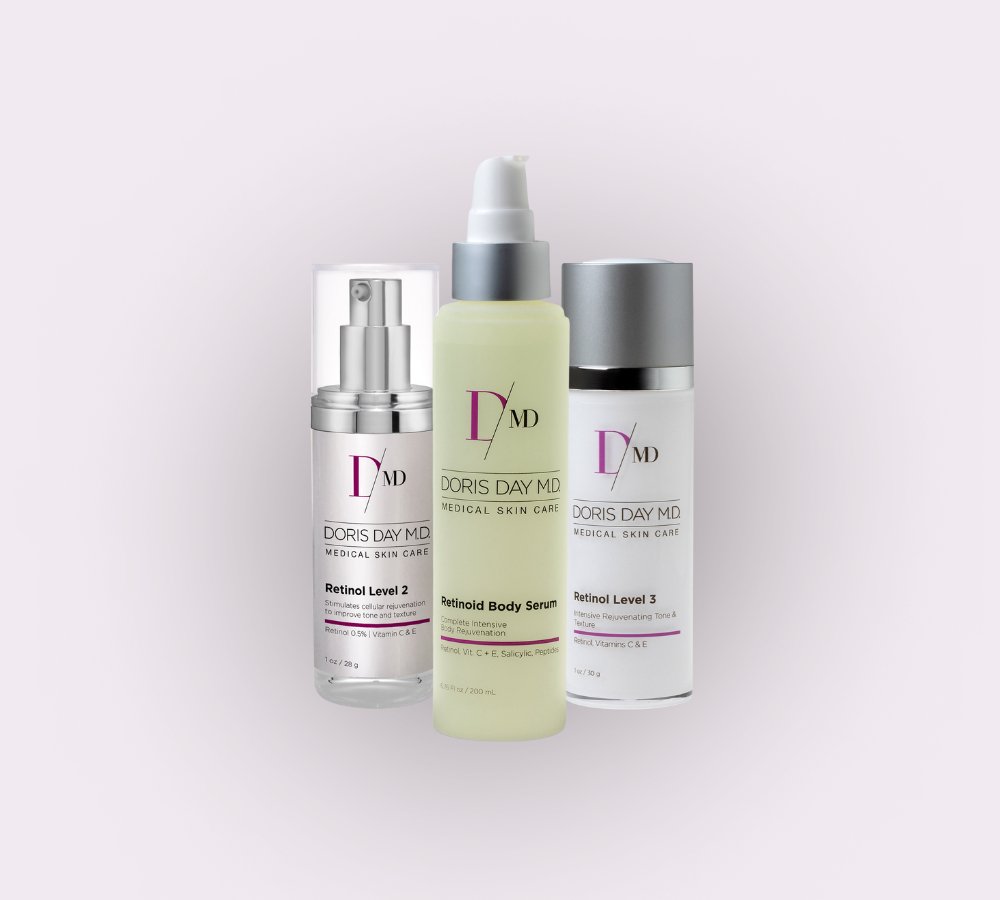Who doesn’t want youthful glowing skin?
We are all looking for that magic ingredient we can’t live without to achieve this goal. It turns out that the single most important ingredient for skin rejuvenation has been here all along and it’s called retinol.
You can’t avoid skin aging altogether but you can dramatically slow it down. Preventing damage with proper sun protection is a given but adding in the right retinol formulation will help restore and rejuvenate your face and now your body too.
Retinol, retinoids and retinoic acid is the one class of ingredients that have many decades of solid data, in peer reviewed medical journals proving it’s benefits. The only thing that’s changed about them over the years is that the formulations have been improved to help make them more tolerable and even more effective.
So, now you ask, what are these and what’s the difference between a retinol, retinoid and retinoic acid?
The answer: They are all in a class of Vitamin A, which is an essential vitamin for your body, and your skin. In the skin it helps normalize skin cell turnover, it helps improve collagen production and it helps brighten the skin. In the scalp, it may help with hair growth. There are several myths about it, the most common being that using a retinol will make you more sun sensitive. The truth is that having it on your skin does not make you more sun sensitive but the ingredient itself is not usually stable in sunlight, meaning it will break down and lose efficacy, so we recommend using it at night unless it’s specifically stabilized for use during the day.

Now for the nuances of the ingredients:
- Retinol:
- retinol is a subtype of retinoid
- retinols typically have a lower irritancy than retinoic acid since your body will convert it to retinoic acid as it needs
- It can take a little longer to see the benefits slower than retinoic acid, but having less irritancy, and not needing a prescription makes it worth the tradeoff
- Retinoid:
- It takes a retinoid one less step than retinol to break down into retinol acid, making the retinoid a stronger product than retinol
- Comes in form of topical serums, creams or gels and often combined with antioxidants for added benefits and efficacy
- My Body Retinol is an excellent example: contains a high powered retinol called hydroxypinacolone retinoate and also has vitamin C and salicylic acid for improvement of crepey skin and more even skin tone
- My CE HPR eye is an outstanding retinoid-antioxidant cream designed specifically for the delicate under eye area to improve the appearance of crepey skin and dark circles
- My Retinol Level 3 are great step-up retinols that combine powerful retinols along with supportive antioxidants to go above and beyond in helping your skin look it's most beautiful best.
- Retinoic Acid: the active ingredient in retinols and retinoids
- This is usually only available by prescription and comes in varying concentrations.
- Can be more irritating than retinols
Bottom Line:
Whichever form you use, be sure to also use sunscreen every day and be sun smart. Your skin will thank you for it and every day and be sun smart. Your skin will thank you for it and will look radiant, firm and youthful.






